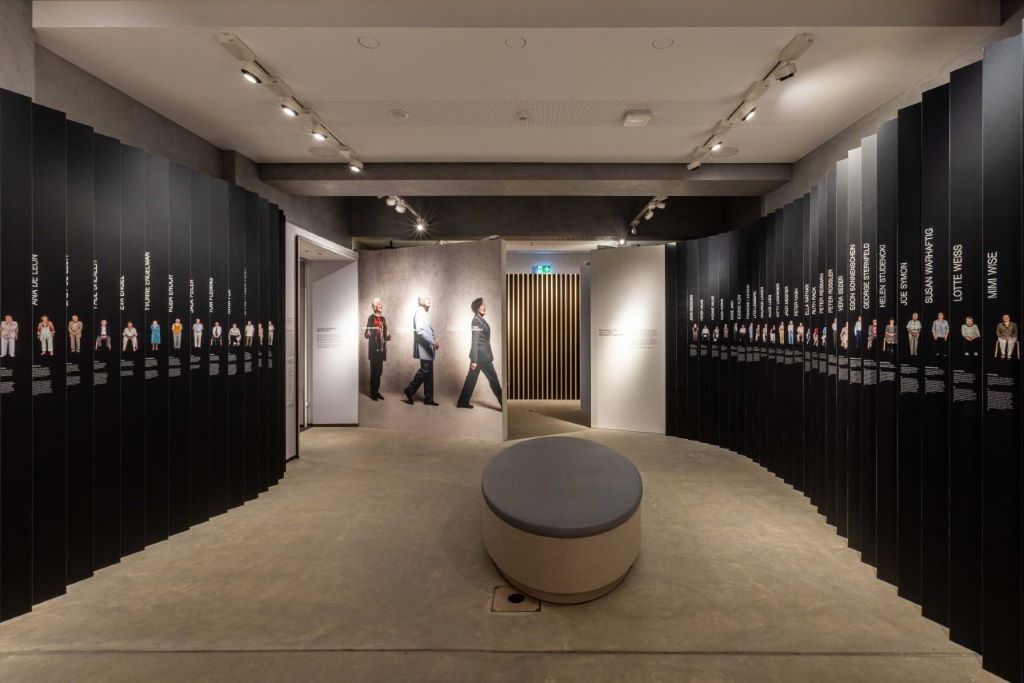
Testimony is an important source for learning the history of the Holocaust. It shapes historical narratives of European Jewish life before, during, and after the Holocaust. Testimony is a way to ensure people and their stories are placed before statistics. The Sydney Jewish Museum wanted to create an exhibition using their collection of testimony that would enable visitors to have a meaningful engagement with these stories for years to come, capturing the personal and communal feeling that comes from hearing a Holocaust survivor.
Together, we created Reverberations, an exhibition that shines a light on the humanity and life experiences of 43 Holocaust survivors, and the painful decision they make each time they relive stories of unimaginable loss.
Within the exhibit’s core, lenticular walls visualize the notion of reverberation. From one perspective, the lenticular wall reads “Why Do You Share Your Story?” in large print. Photographs of survivors sharing their stories form the other perspective.
From here, visitors enter a multi-screen theater showcasing testimonies that are edited thematically according to the interview questions.
The most innovative experience within the exhibit are three simulated conversation booths with Holocaust survivors who settled in Australia, using natural language processing to engage in a one-on-one discussion. Visitors are also invited and—we hope—inspired to write notes addressed directly to survivors and/or their families about the personal impact of their testimonies.

The question of how the SJM could best preserve survivors’ voices has been at the forefront of discussions for many years. As actual survivors begin to pass away, and face-to-face interaction more difficult, our design team turned to the Sydney Jewish Museum’s testimony collection, which dates back to 1991 when a series of interviews were conducted to be used in the soon to be opened Museum. Recent testimonies recorded in 2018 and 2020 were shot full length in 4k, and some were recorded stereoscopically. These interviews also veered from the traditional narrative to include FAQs such as – do you hate Germans, do you believe in God, can you forgive?
While recontextualizing and editing testimonies might strike some as controversial, we leaned into the need to make connections with individual survivors as accessible and emotional as possible, in service of continuing to educate all of us and future generations so that we never repeat the horrors of the Holocaust. This work is critical, and museums like Sydney Jewish Museum have a specific mandate to create connection in the service of education and the safety of future generations.

Building off of technology developed by the USC Shoah Foundation, the Dimensions in Testimony section of our exhibit allows visitors to feel that they are entering into a realtime dialogue with the survivors, as they ask direct questions of three survivors. Voice recognition technology serves pre-recorded answers according to the question being asked.
Using an “empathy mirror” form factor—interviews filmed in a one-to-one format that replicates the experience of sitting face-to-face—visitors engage in a rare opportunity to bear witness and develop empathy. Each survivor’s story occupies its own nook in the exhibit, so that the encounter feels intimate and focused.
partners
Local Projects
USC Shoah Foundation
Sydney Jewish Museum


